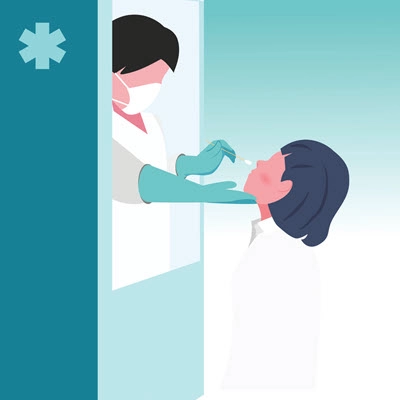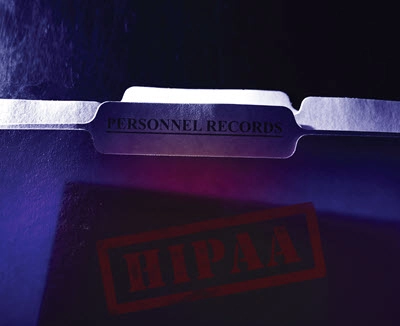Enact a protective buffer for residents and staff without violating employee privacy.
As COVID-19 infections continue to swamp the U.S., employers of all ilk are trying to figure out how to conduct business safely — or whether doing so is even possible. The Department of Health and Human Services (HHS) is sending some nursing homes testing devices, but others will still be managing testing or symptom screening on their own. While routine staff testing used to be recommended by the Centers for Medicare & Medicare (CMS), it is now a requirement, according to David R. Wright, director of Survey and Certification Group at CMS, in an August QSO memorandum.
Performing tests and screening are short-term goals but may have long-term legal implications, suggests Karla Grossenbacher, JD, partner in labor and employment at Seyfarth Shaw LLP, in Washington D.C. Employee health privacy rights are not diminished by the public health emergency, and even though employers need to intrude somewhat on employees’ privacy, with body temperature and symptoms screenings, for example, they should be careful to not overstep, she says.

Mesh CDC Guidelines with Common Sense
Practices that want to protect employees who may be at higher risk for more serious complications from COVID-19 without invading their privacy should let employees self-identify whether they have any conditions that put them in the high risk category and then honoring their concerns, Grossenbacher says.
Although the U.S. Equal Employment Opportunity Commission (EEOC) recommends that employers stay abreast of and follow CDC and other public health agency recommendations, the EEOC outlines some crucial language that employers should be aware of when navigating protecting employees without interfering with their privacy or chancing discrimination.
Federal agency, public health, and professional organization guidance have all encouraged employers to prioritize safety as they pursue a return to business, and screening employees has been recommended consistently. The recommendations from the Centers for Disease Control and Prevention (CDC) for healthcare personnel (and others working in medical offices or facilities) have included taking employee temperatures before each shift, as well as running through a symptoms questionnaire. The CDC doesn’t specify who exactly should be conducting these screenings, though the agency does mention that the screenings should, ideally, occur before employees enter the office or facility.
Consider Company Policy Carefully
But employers should think carefully about who is tasked with doing this work — and what happens to protect everyone’s physical safety, as well as privacy. Even if the employer is legally taking employees’ temperatures, the ways in which the employer conducts this screening could create privacy concerns or even be against the law, Grossenbacher says. While most workers seem grateful for all the precautions organizations are taking to protect them, litigation from disgruntled employees is always a possibility, especially if employers overstep. Although a staff member who works at the front desk or provides security outside the office may be the most convenient, logistically, a human resources staff member who has the training to prioritize discretion may be a better choice.
She lists these questions as points to consider: Are employees’ temperatures recorded? Who has access to that information? Do staff members wait in a physically distanced line to be screened — but with the possibility of overhearing others’ results? What happens if someone comes to work and has a fever? How is the designated screener protected physically?
One option is to encourage employees to screen themselves, which obviously requires more trust for employer and employee both — and among colleagues.

For nursing homes that acquire testing platforms, additional technical training will be necessary so the designated staff know how to operate the devices. Those that receive platforms from HHS will receive a six-week supply of tests, but will then need to obtain tests directly from the manufacturers, the estimated cost of which ($25 per test) will not be reimbursed, law firm Hall Render points out.
Even if you’ve been operating with rather ad hoc protocols, the increasing rate and widespread nature of the pandemic should bring new focus. Make sure you establish procedures and write them down. Keep staff in the loop and keep communication lines open so they can voice their concerns, fears, or even confide personal challenges they may be navigating outside of work that may be affecting their performance.
Know These Particular Guidelines
For nursing homes that are struggling to maintain enough staff, the EEOC’s guidelines for hiring and onboarding are particularly pertinent. The EEOC says that during the public health emergency, and consistent with CDC guidelines, employers may test new hires before their start date, delay anyone who tests positive from starting, and even withdraw a job offer if the potential hire has COVID-19, as they cannot work safely.
However, it is not legal to withdraw a job offer or postpone the start date unilaterally for a potential hire who is older than 65 or who is pregnant, even though these factors may make the person at higher risk for more serious complications from COVID-19, the EEOC says. An employer should instead make accommodations like offering telework, if the role allows such flexibility, or determining whether the individual would prefer to postpone their start date.
Nursing home staffing decisionmakers should also know that antibody tests for COVID-19 are subject to different rules from the EEOC than the tests that detect the presence of SARS-CoV-2, the virus that causes COVID-19 infection.
“An antibody test constitutes a medical examination under the ADA. In light of CDC’s Interim Guidelines that antibody test results ‘should not be used to make decisions about returning persons to the workplace,’ an antibody test at this time does not meet the ADA’s ‘job related and consistent with business necessity’ standard for medical examinations or inquiries for current employees. Therefore, requiring antibody testing before allowing employees to re-enter the workplace is not allowed under the ADA,” the EEOC says.
